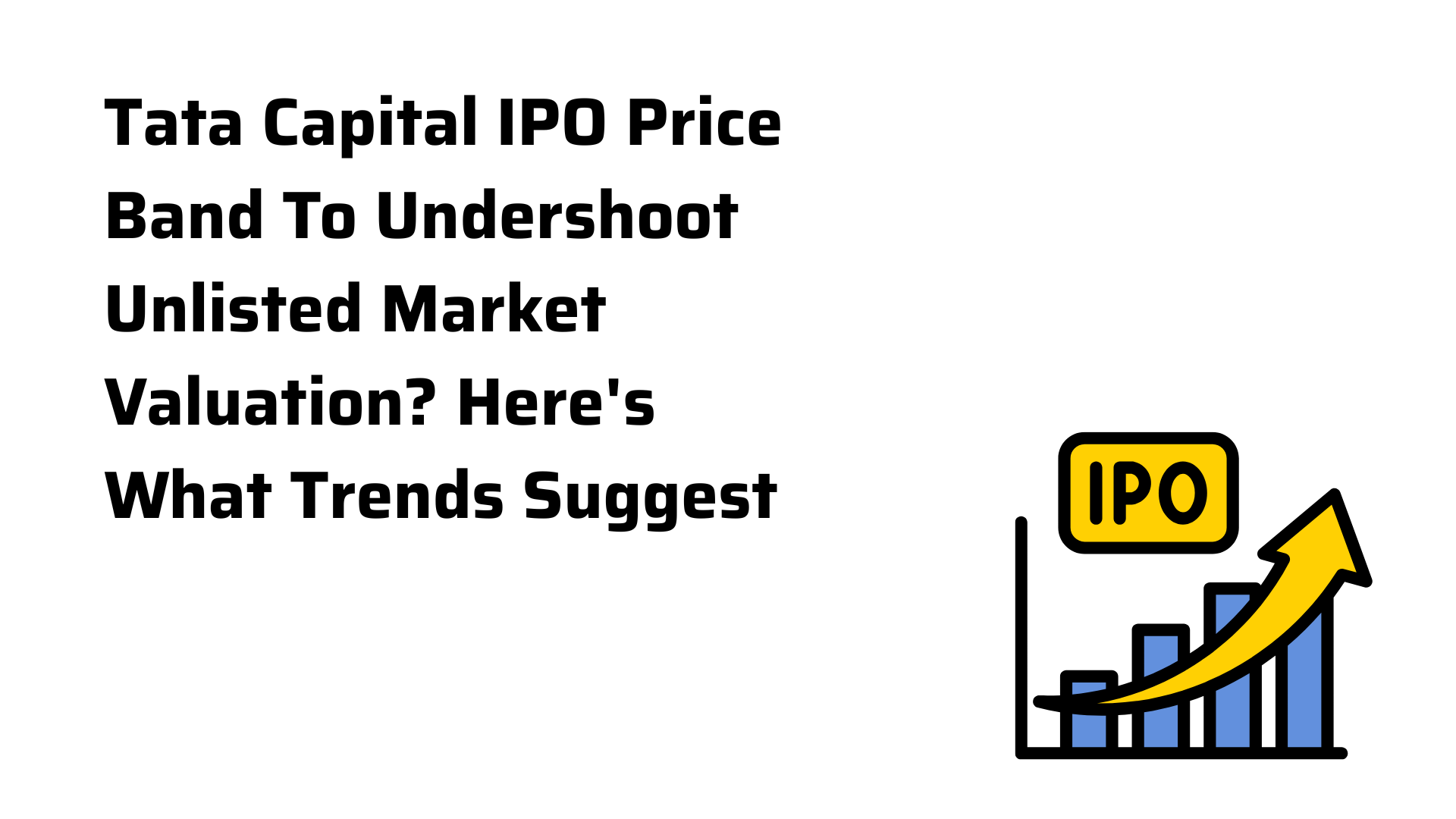As Tata Capital gears up for its much-anticipated IPO, early signs suggest that the price band may fall significantly below its current valuation in the unlisted market. While Tata Capital’s unlisted shares are currently being quoted around Rs 775, the actual IPO price could likely be set lower, mirroring the trajectory of other recent high-profile IPOs. HDB Financial Services, which had an unlisted price of Rs 1,550, debuted with a price band of Rs 700-740, and NSDL, trading at Rs 1,275 in the grey market, set its IPO band between Rs 700-800 Adding further fuel to expectations of a subdued IPO price, Tata Capital’s last rights issue was priced at just Rs 343 per share. That’s less than half the current unlisted market quote, suggesting that the Rs 775 valuation may be overly optimistic and not indicative of where institutional investors are willing to commit capital. The company’s last right issue was recorded on July 18, 2025, just days before the company posted its updated draft red herring prospectus
The Tata company filed its DRHP with SEBI on August 4. The proposed IPO is a combination of a fresh issuance of 21 crore equity shares and an Offer For Sale (OFS) of 26.58 crore shares, totaling 47.58 crore equity shares. This growing divergence between unlisted valuations and actual IPO pricing is prompting increased scrutiny from investors especially retail participants who often rely on grey market cues for investment decisions.
According to Pranav Haldea, MD of Prime Database, this discrepancy is not surprising. “The price in the unlisted market has no bearing on the final IPO price. IPO pricing is determined primarily through investor roadshows and broader market sentiment,” Haldea noted
He added that bullish market phases in 2023 and 2024 created inflated expectations in the unlisted space. Retail investors piled in, anticipating large listing gains some of which have failed to materialise. Haldea cautioned that “equity is inherently risky and sure shot gains are not guaranteed,” and that IPOs carry even greater risk than already-listed companies as disclosures are fewer and true price discovery has not yet happened.
A recent note from Macquarie supports the possibility of a lower IPO band. It points out that even if Tata Capital lists “at a 60% discount to its unlisted market price”, the company would still trade at higher valuations than many of its NBFC peers. “Tata Capital’s FY25 price to book multiple at Rs 775 stands at 6.4 times higher than HDB Financial Services (3.4 times), CIFC (5.7 times),” the report states. Tata Capital, the third-largest diversified NBFC in India with AUM of Rs 2.3 lakh crore, is listing primarily to augment its Tier-I capital and comply with the RBI’s NBFC upper-layer norms. Macquarie notes that the listing is expected to create a new benchmark in the sector, especially as it follows the merger with Tata Motors Finance Limited (TMFL), which has diluted overall return ratios. With IPO price bands increasingly being set well below unlisted market prices, investors should exercise caution when valuing companies based solely on grey market quotes. As Haldea stressed, “The unlisted market is unregulated, and its pricing mechanisms are speculative at best.”
Unless there’s a dramatic shift in institutional sentiment, Tata Capital’s IPO is unlikely to match the hype of its unlisted valuation, a trend that appears to be becoming the new normal.

